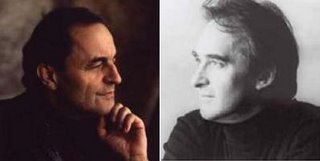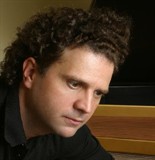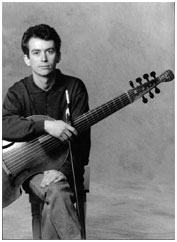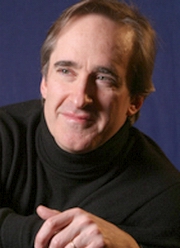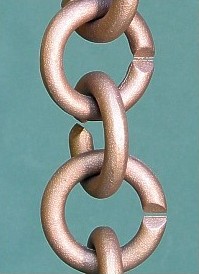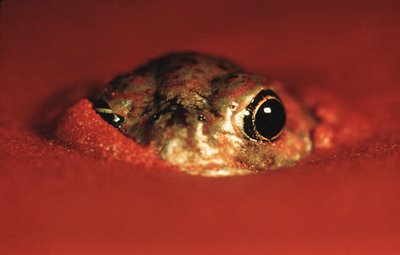Last month | Next monthClassical Month in Washington is a monthly feature. If there are concerts you would like to see included on our schedule, send your suggestions by e-mail (ionarts at gmail dot com). Happy listening!May 1, 2007 (Tue)
12:10 pmNoontime Cantata (BWV 147, “Herz und Mund und Tat und Leben”)
Fantasia & Fugue in G Minor, BWV 542 (Scott Dettra, organ)
Washington Bach Consort
Church of the Epiphany (13th and G Streets NW)
May 1, 2007 (Tue)
8 pmNew Music, University of Maryland [FREE]
Clarice Smith Performing Arts Center (College Park, Md.)
May 2, 2007 (Wed)
12:10 pmThomas Hrynkiw, pianist [FREE]
Music by J. S. Bach, Beethoven, Chopin, Prester, and Revutsky
National Gallery of Art, East Building Auditorium
May 2, 2007 (Wed)
6:30 pmLa Vie Parisienne (excerpts of French opera)
Opera Camerata of WashingtonCharles Sumner School (1201 17th Street NW)
May 2, 2007 (Wed)
7:30 pmAnna Maria Pammer (soprano) and Markus Vorzellner (piano) [FREE]
Music by Schoenberg, Webern, Berg
An das Lied: Festival of Song 2007Austrian Embassy
May 3, 2007 (Thu)
7 pmComposer Portrait: Antonin DvořákNational Symphony Orchestra
Kennedy Center Concert Hall
Review -- Andrew Lindemann Malone (
Washington Post, May 4)
May 3, 2007 (Thu)
8 pmBaltimore Symphony OrchestraWith Marin Alsop, Leila Josefowicz
Includes Adams,
The Dharma at Big SurMeyerhoff Symphony Hall (Baltimore, Md.)
Review -- Michael Lodico (
Ionarts, May 4)
May 4, 2007 (Fri)
7 pmComposer Portrait: Antonin DvořákNational Symphony Orchestra
Kennedy Center Concert Hall
May 4, 2007 (Fri)
7:30 pmDonizetti,
Lucia di LammermoorOpera Bel CantantiRandolph Road Theater (Silver Spring, Md.)
May 4, 2007 (Fri)
7:30 pmMemorial Concert in Honor of Susanna "Susie" KimNational Association of Professional Asian American Women
Kennedy Center Terrace Theater
May 4, 2007 (Fri)
7:30 pmCharles Miller, organ
Organ music of the French masters
National City Christian ChurchMay 4, 2007 (Fri)
7:30 pmJohannes Föttinger (tenor) and Markus Vorzellner (piano) [FREE]
Music by Korngold, Jelinek, Krenek, Schoenberg
An das Lied: Festival of Song 2007Austrian Embassy
Review -- Sarah Hoover (
Washington Post, May 7)
May 4, 2007 (Fri)
8 pmBaltimore Symphony OrchestraWith Marin Alsop, Leila Josefowicz
Includes Adams,
The Dharma at Big SurMeyerhoff Symphony Hall (Baltimore, Md.)
May 4, 2007 (Fri)
8 pmAmerican Chamber Players [FREE]
Beethoven septet, Zwillich
Library of CongressReview -- Joe Banno (
Washington Post, May 7)
May 4, 2007 (Fri)
8 pmAnnapolis Symphony Orchestra
With Jennifer Koh, violin
Maryland Hall for the Creative Arts (Annapolis, Md.)
Review -- Andrew Lindemann Malone (
Washington Post, May 7)
May 5, 2007 (Sat)
11 amBaltimore Symphony Orchestra (Casual Concert)
With Marin Alsop
Meyerhoff Symphony Hall (Baltimore, Md.)
May 5, 2007 (Sat)
2 pmAndrew Von Oeyen, pianoWPAS
Kennedy Center Terrace Theater
Review -- Tim Page (
Washington Post, May 7)
May 5, 2007 (Sat)
7 pmComposer Portrait: Antonin DvořákNational Symphony Orchestra
Kennedy Center Concert Hall
May 5, 2007 (Sat)
7 pmLeoš Janáček,
JenůfaWashington National Opera
Kennedy Center Opera House
Review -- Charles T. Downey (
Ionarts, May 7)
May 5, 2007 (Sat)
8 pmMusical Madness (music by Tyl Meyn, Lassus, Gesualdo, Stravinsky)
Woodley Ensemble
St. Columba's Episcopal Church
Review -- Cecelia Porter (
Washington Post, May 7)
May 5, 2007 (Sat)
8 pmNational PhilharmonicRossini,
Barber of Seville (in concert)
Music Center at Strathmore
Review -- Mark J. Estren (
Washington Post, May 7)
May 5, 2007 (Sat)
8 pmAnnapolis Symphony Orchestra
With Jennifer Koh, violin
Maryland Hall for the Creative Arts (Annapolis, Md.)
May 5, 2007 (Sat)
8:15 pmPuccini,
ToscaBaltimore Opera
Review -- Ronni Reich (
Washington Post, May 7)
May 6, 2007 (Sun)
2 pmKennedy Center Chamber PlayersMusic by Françaix, Hindemith, Schubert
Kennedy Center Terrace Theater
May 6, 2007 (Sun)
3 pmChoral Arts SocietyMusic by Mozart, Lauridsen, Gershwin
Kennedy Center Concert Hall
May 6, 2007 (Sun)
3 pmLise de la Salle, pianoMansion at Strathmore
May 6, 2007 (Sun)
3 pmDonizetti,
Lucia di LammermoorOpera Bel CantantiRandolph Road Theater (Silver Spring, Md.)
May 6, 2007 (Sun)
4 pmJonathan Byers (Baroque cello) and Richard Sweeney (archlute) [FREE]
Phillips CollectionMay 6, 2007 (Sun)
6:30 pmAnna Maria Pammer (soprano) and Markus Vorzellner (piano) [FREE]
Music by Schoenberg, Webern
National Gallery of ArtReview -- Charles T. Downey (
Ionarts, May 8)
May 7, 2007 (Mon)
7:30 pmPierre-Laurent Aimard, piano
La Maison FrançaiseReview -- Charles T. Downey (
Ionarts, May 9)
May 7, 2007 (Mon)
7:30 pmElisabeth Linhart(soprano) and Markus Vorzellner (piano) [FREE]
New songs by Hueber, Wykydal, and Tsenova
An das Lied: Festival of Song 2007Austrian Embassy
May 7, 2007 (Mon)
8 pmBrahms Quintets (for Brahms's birthday)
Peter Sirotin and Co.
Embassy SeriesEmbassy of Germany
May 8, 2007 (Tue)
7:30 pmPierre-Laurent Aimard (piano) and Friends
Contemporary chamber music
La Maison FrançaiseReview -- Michael Lodico (
Ionarts, May 10)
May 8, 2007 (Tue)
7:30 pmInternational Sejong SoloistsKennedy Center Terrace Theater
Review -- Daniel Ginsberg (
Washington Post, May 10)
May 9, 2007 (Wed)
12:10 pmTao Lin, pianist [FREE]
Music by Brahms, Chopin, Haydn
National Gallery of Art, East Building Auditorium
May 9, 2007 (Wed)
7 pmPuccini,
ToscaBaltimore Opera
May 9, 2007 (Wed)
7:30 pmMusicians from Marlboro III [FREE]
Includes Shostakovich 8th string quartet
Freer Gallery of ArtMay 10, 2007 (Thu)
7 pmNational Symphony Orchestra: Serious FunWith Peter Schickele, Marielle and Katia Labèque
Kennedy Center Concert Hall
Review -- Tim Page (
Washington Post, May 11)
May 10, 2007 (Thu)
7:30 pmLeoš Janáček,
JenůfaWashington National Opera
Kennedy Center Opera House
May 10, 2007 (Thu)
8 pmUniversity of Maryland SymphonyWagner,
Siegfried (Act III)
Semi-staged with Lear/Stewart Emerging Singers
Clarice Smith Performing Arts Center (College Park, Md.)
Review -- Joe Banno (
Washington Post, May 12)
May 11, 2007 (Fri)
1:30 pmNational Symphony Orchestra: Serious Fun (P.D.Q. Bach)With Peter Schickele
Kennedy Center Concert Hall
Review -- Robert Battey (
Washington Post, May 12)
May 11, 2007 (Fri)
6:30 pm5th Annual Children’s Opera on the Hill! [FREE]
Opera's "Greatest Hits" (for children, age 5 and older)
Washington National Opera Domingo-Cafritz Young Artists Program
Stuart-Hobson Middle School (5th and E Streets NE )
May 11, 2007 (Fri)
8 pmUniversity of Maryland Chamber SingersMusic by Purcell, Poulenc, Penderecki
Clarice Smith Performing Arts Center (College Park, Md.)
May 11, 2007 (Fri)
8 pmYefim Bronfman, pianoWPASMusic Center at Strathmore
Robert Battey (
Washington Post, May 14)
May 11, 2007 (Fri)
8 pmKlavier Trio AmsterdamCorcoran Gallery of Art
Review -- Michael Lodico (
Ionarts, May 14)
May 11, 2007 (Fri)
8:15 pmPuccini,
ToscaBaltimore Opera
May 12, 2007 (Sat)
3 pmKonstantin Scherbakov, piano [FREE]
American recital début: complete Shostakovich preludes and fugues
Baltimore Museum of Art
May 12, 2007 (Sat)
6 pmNational Symphony Orchestra: Prelude Concert [FREE]
Millennium Stage EventKennedy Center Concert Hall
May 12, 2007 (Sat)
7 pmVerdi,
MacbethWashington National Opera
Kennedy Center Opera House
Review -- Charles T. Downey (
Ionarts, May 14)
May 12, 2007 (Sat)
8 pmNational Symphony Orchestra: Serious Fun (American Music)With Peter Schickele
Kennedy Center Concert Hall
May 12, 2007 (Sat)
8 pmBach the Dramatist (BWV 205, Dramma per musica, “Zerreißet, zersprenget”)
Washington Bach ConsortRachel M. Schlesinger Concert Hall and Arts Center
Review -- Michael Lodico (
Ionarts, May 15)
May 12, 2007 (Sat)
9 pmLeila Josefowicz, violin
Jewish Community Center of Greater Washington (Rockville, Md.)
Review -- Charles T. Downey (
Ionarts, May 15)
May 13, 2007 (Sun)
2 pmLeoš Janáček,
JenůfaWashington National Opera
Kennedy Center Opera House
May 13, 2007 (Sun)
3 pmPuccini,
ToscaBaltimore Opera
May 13, 2007 (Sun)
4 pmDarragh Morgan (violin) and Mary Dullea (piano) [FREE]
Phillips CollectionMay 13, 2007 (Sun)
5 pmCapital City SymphonyMusic by Bach, Hanson, and George Walker
Atlas Performing Arts CenterMay 13, 2007 (Sun)
6:30 pmMiceal O'Rourke, pianist [FREE]
With the National Gallery Chamber Players String Quartet
Music by Brahms and Field
National Gallery of ArtMay 13, 2007 (Sun)
7:30 pmLeila Josefowicz, violin
Jewish Community Center of Greater Washington (Rockville, Md.)
May 14, 2007 (Mon)
7 pmVerdi,
MacbethWashington National Opera
Kennedy Center Opera House
May 16, 2007 (Wed)
12:10 pmMarta Felcman, pianist [FREE]
Music by Chopin, Guastavino, Ravel, and Scarlatti
National Gallery of Art, East Building Auditorium
May 16, 2007 (Wed)
7 pmCelebrating the Lieder Tradition (lecture-concert)
Scott Murphree (tenor) and Thomas Bagwell (piano)
An das Lied: Festival of Song 2007Austrian Embassy
May 16, 2007 (Wed)
7:30 pmLeoš Janáček,
JenůfaWashington National Opera
Kennedy Center Opera House
May 17, 2007 (Thu)
7 pmNational Symphony OrchestraWith Lang Lang, piano
Kennedy Center Concert Hall
Review -- Michael Lodico (
Ionarts, May 18)
May 17, 2007 (Thu)
7:30 pmVerdi,
MacbethWashington National Opera
Kennedy Center Opera House
May 17, 2007 (Thu)
8 pmBaltimore Symphony OrchestraWith Günther Herbig, Leon Fleisher, Katherine Jacobson
Meyerhoff Symphony Hall (Baltimore, Md.)
Review -- Charles T. Downey (
Ionarts, May 21)
May 18, 2007 (Fri)
7 pmNational Symphony OrchestraWith Lang Lang, piano
Kennedy Center Concert Hall
May 18, 2007 (Fri)
8 pmBorromeo String Quartet with pianist Wu Han [FREE]
Music by Stravinsky, Bartók, Shostakovich
Library of CongressReview -- Charles T. Downey (
Ionarts, May 20)
May 18, 2007 (Fri)
8 pmBaltimore Symphony OrchestraWith Günther Herbig, Leon Fleisher, Katherine Jacobson
Meyerhoff Symphony Hall (Baltimore, Md.)
May 18, 2007 (Fri)
8 pmDonizetti,
Don PasqualeOpera Theater of Northern VirginiaThomas Jefferson Community Theater (Arlington, Va.)
Review -- Mark J. Estren (
Washington Post, May 22)
May 19, 2007 (Sat)
1 and 3 pmTeddy Bear ConcertMembers of NSO
Kennedy Center Family Theater
May 19, 2007 (Sat)
6 pmTribute Concert for Mstislav Rostropovich [FREE]
Members of the National Symphony Orchestra
Millennium Stage EventKennedy Center Concert Hall
Review -- Robert Battey (
Washington Post, May 21)
May 19, 2007 (Sat)
7 pmLeoš Janáček,
JenůfaWashington National Opera
Kennedy Center Opera House
May 19, 2007 (Sat)
7 pmHaydn,
Die SchöpfungCantate Chamber SingersWestmoreland Congregational Church (Bethesda, Md.)
Review -- Joe Banno (
Washington Post, May 21)
May 19, 2007 (Sat)
8 pmBrentano String Quartet
Kreeger MuseumReview -- Stephen Brookes (
Washington Post, May 21)
May 19, 2007 (Sat)
8 pmSacred MysteriesThomas Circle Singers
National City Christian Church
Review -- Joan Reinthaler (
Washington Post, May 21)
May 19, 2007 (Sat)
8 pmNational Symphony OrchestraWith Lang Lang, piano
Kennedy Center Concert Hall
May 19, 2007 (Sat)
8 pmBaltimore Symphony OrchestraWith Günther Herbig, Leon Fleisher, Katherine Jacobson
Music Center at Strathmore
Review -- Charles T. Downey (
Ionarts, May 21)
May 19, 2007 (Sat)
8 pmOffenbach/Strauss operetta
Embassy SeriesEmbassy of Austria
Review -- Michael Lodico (
Ionarts, May 22)
May 20, 2007 (Sun)
1 and 3:30 pmNSO Kinderkonzert: Fiddlin' AroundKennedy Center Family Theater
May 20, 2007 (Sun)
2 pmVerdi,
MacbethWashington National Opera
Kennedy Center Opera House
May 20, 2007 (Sun)
3 pmDonizetti,
Don PasqualeOpera Theater of Northern VirginiaThomas Jefferson Community Theater (Arlington, Va.)
May 20, 2007 (Sun)
3 pmBaltimore Symphony OrchestraWith Günther Herbig, Leon Fleisher, Katherine Jacobson
Meyerhoff Symphony Hall (Baltimore, Md.)
May 20, 2007 (Sun)
3 pmEclipse Chamber Orchestra: That’s Italian
Music by Adamo, Vivaldi, Respighi
George Washington National Masonic Memorial (Alexandria, Va.)
Review -- Cecelia Porter (
Washington Post, May 22)
May 20, 2007 (Sun)
4 pmShakespeare Festival ConcertMusic by Berlioz, Walton, Vaughan Williams
Cathedral Choral Society
Washington National Cathedral
Review -- Joe Banno (
Washington Post, May 22)
May 20, 2007 (Sun)
4 pmMichael McHale (piano) [FREE]
Phillips CollectionReview -- Daniel Ginsberg (
Washington Post, May 22)
May 20, 2007 (Sun)
6:30 pmInscape Chamber Music Project [FREE]
Music for violin, cello, clarinet, and piano by Beethoven and Khachaturian
National Gallery of ArtReview -- Michael Lodico (
Ionarts, May 21)
May 21, 2007 (Mon)
6 pmNorthwestern University School of Music [FREE]
Millennium Stage Conservatory Project
Kennedy Center Terrace Theater
May 21, 2007 (Mon)
7 pmLeoš Janáček,
JenůfaWashington National Opera
Kennedy Center Opera House
May 21, 2007 (Mon)
7 pmWashington, D.C. Choral FestivalKennedy Center Concert Hall
Review -- Cecelia Porter (
Washington Post, May 23)
May 22, 2007 (Tue)
6 pmSan Francisco Conservatory [FREE]
Millennium Stage Conservatory Project
Kennedy Center Terrace Theater
May 23, 2007 (Wed)
12:10 pmBrian Ganz, pianist [FREE]
Music by Chopin, Debussy, Griffes, Lennon, Liszt, and MacDowell
National Gallery of Art, East Building Auditorium
May 23, 2007 (Wed)
6 pmOberlin Conservatory [FREE]
Millennium Stage Conservatory Project
Kennedy Center Terrace Theater
May 23, 2007 (Wed)
7:30 pmVerdi,
MacbethWashington National Opera
Kennedy Center Opera House
May 23, 2007 (Wed)
8 pmDonizetti,
Don PasqualeOpera Theater of Northern VirginiaThomas Jefferson Community Theater (Arlington, Va.)
May 24, 2007 (Thu)
6 pmBerklee College of Music [FREE]
Millennium Stage Conservatory Project
Kennedy Center Terrace Theater
May 24, 2007 (Thu)
7:30 pmRoger Tapping (viola) and Judith Gordon (piano)
La Maison FrançaiseMay 24, 2007 (Thu)
7:30 pmMathias Hausmann (baritone) and Markus Vorzellner (piano) [FREE]
Shakespeare songs (Schubert, Korngold, Wolf, Haydn, Angerer)
An das Lied: Festival of Song 2007Austrian Embassy
Review -- Joe Banno (
Washington Post, May 26)
May 24, 2007 (Thu)
7:30 pmLeoš Janáček,
JenůfaWashington National Opera
Kennedy Center Opera House
May 24, 2007 (Thu)
8 pmBaltimore Symphony OrchestraBeethoven (Fifth Symphony), Martinů (Sixth Symphony)
Meyerhoff Symphony Hall (Baltimore, Md.)
Review -- Charles T. Downey (
Ionarts, May 27)
May 25, 2007 (Fri)
6 pmEastman School of Music [FREE]
Millennium Stage Conservatory Project
Kennedy Center Terrace Theater
May 25, 2007 (Fri)
8 pmBaltimore Symphony OrchestraBeethoven (Fifth Symphony), Martinů (Sixth Symphony)
Meyerhoff Symphony Hall (Baltimore, Md.)
May 26, 2007 (Sat)
11 amBaltimore Symphony Orchestra (Casual Concert)
Beethoven (Fifth Symphony)
Meyerhoff Symphony Hall (Baltimore, Md.)
May 26, 2007 (Sat)
6 pmJacobs School of Music, Indiana University [FREE]
Millennium Stage Conservatory Project
Kennedy Center Terrace Theater
May 27, 2007 (Sun)
3 pmDonizetti,
L'Elisir d'AmoreOpera Bel CantantiRandolph Road Theater (Silver Spring, Md.)
Review -- Mark J. Estren (
Washington Post, May 29)
May 27, 2007 (Sun)
4 pmDavid Quigley (piano) [FREE]
Phillips CollectionMay 27, 2007 (Sun)
6 pmShepherd School of Music, Rice University [FREE]
Millennium Stage Conservatory Project
Kennedy Center Terrace Theater
May 29, 2007 (Tue)
7:30 pmVerdi,
MacbethWashington National Opera
Kennedy Center Opera House
May 30, 2007 (Wed)
12:10 pmStephen Prutsman, pianist [FREE]
Music by J. S. Bach, Prutsman, and Ravel
National Gallery of Art, East Building Auditorium
May 31, 2007 (Thu)
7 pmNSO PopsKennedy Center Concert Hall
May 31, 2007 (Thu)
8 pmWashington National Opera in ConcertPlácido Domingo, conductor
Music Center at Strathmore
 There are good things happening around these parts, though, especially with the announcement of the Baltimore Symphony Orchestra's first season under the leadership of Marin Alsop. Alongside a complete cycle of Beethoven symphonies, John Adams, Tan Dun, James MacMillan, and Thomas Adès will all conduct performances of their own compositions. Get all the details in the official press release (.PDF file). Tim Page called the lineup, quite rightly, "an infinitely more thought-provoking season than the one the National Symphony Orchestra offered for 2006-07, which has been much criticized for its timidity and reiteration of standard repertory."
There are good things happening around these parts, though, especially with the announcement of the Baltimore Symphony Orchestra's first season under the leadership of Marin Alsop. Alongside a complete cycle of Beethoven symphonies, John Adams, Tan Dun, James MacMillan, and Thomas Adès will all conduct performances of their own compositions. Get all the details in the official press release (.PDF file). Tim Page called the lineup, quite rightly, "an infinitely more thought-provoking season than the one the National Symphony Orchestra offered for 2006-07, which has been much criticized for its timidity and reiteration of standard repertory." 